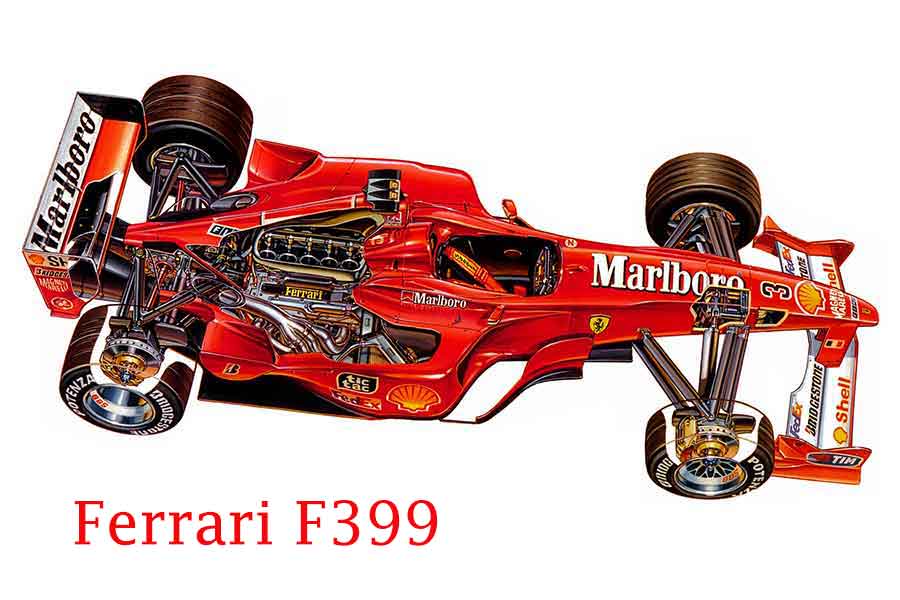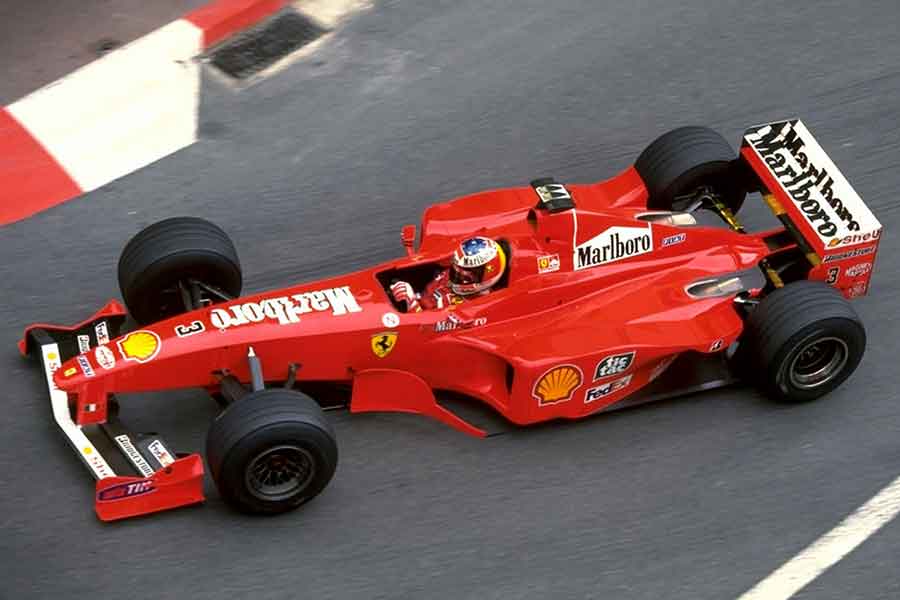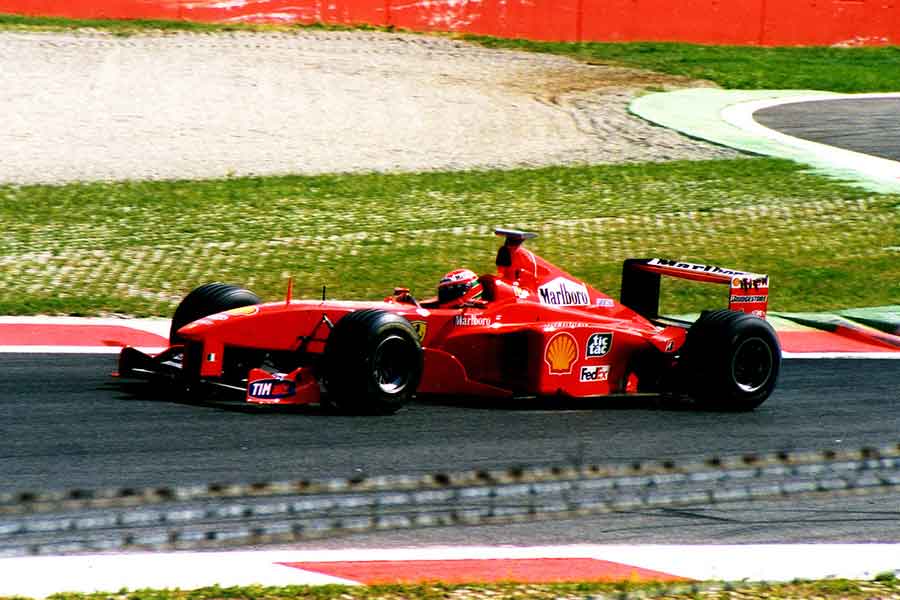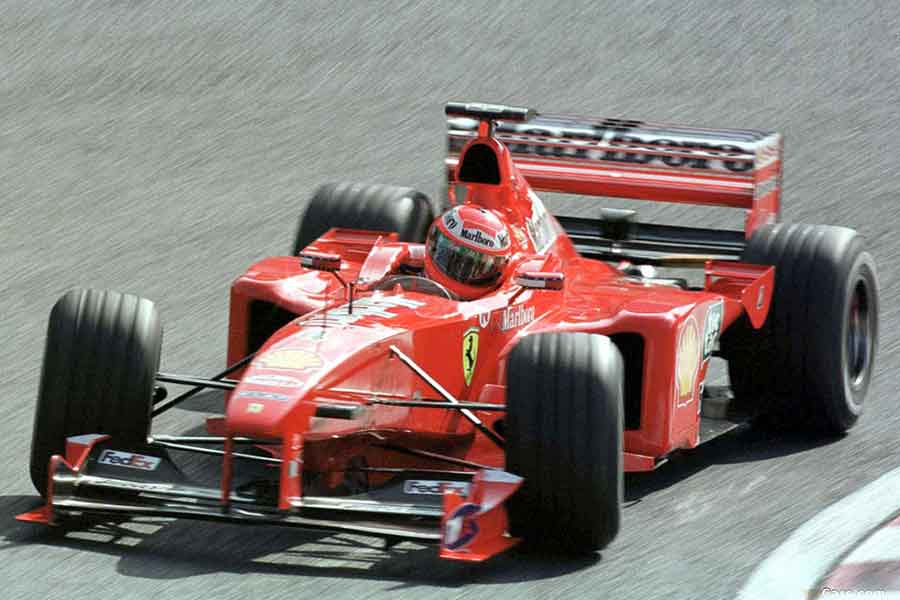Ferrari F399 - A Car That Ended the Drought for the Italian Team
The Ferrari F399 was the car that won the 1999 Formula One Constructors’ Championship title for the Italian team after 16 years.
End of the inglorious record
Until 1999, the most popular F1 team struggled for more than one decade and was unable to compete with Williams and McLaren. The Maranello-based team desperately wanted to break the winless streak and with the Ferrari F399, Scuderia finally reached the throne. The main aim was to win the first Drivers’ Championship title but Mika Hakkinen in MP4/14 won the battle against Eddie Irvine.

Ferrari F399 launch, 1999
However, the triumph in the Constructors’ Championship, first after 16 years, was more than just a consolation. It was a huge boost for the following years during which Ferrari will become a dominant force.
Ferrari F399 was very similar to its predecessor
The new car was almost the same as its predecessor F300. Designer Rory Byrne did a clever development of F300, with the same high exhausts, a third front shock absorber, electronically controlled power steering, newly designed rear suspension, new front wing, and the use of Bridgestone tires with four grooves instead of three.

Ferrari F399 was very similar to its predecessor
The new Ferrari 048 engine was lighter than the old one and was slightly more powerful, but the important thing was that it was much more reliable than the previous engine. The aerodynamics was refined, putting an accent to drag – downforce ratio. At the end, all those small changes proved to be decisive in the Constructors’ Championship.
Good start of the season
Michael Schumacher and Eddie Irvine were driving the Ferrari F399. After Schumi crashed in the British Grand Prix at Silverstone and suffered a broken leg, he was replaced by Mika Salo in six rounds. However, the start of the campaign was excellent after Irvine won the season-opening race in Australia. Michael Schumacher later finished 2nd in Brazil and that was followed by the wins at Imola and Monaco.

Michael Schumacher in Ferrari F399, 1999 Formula 1 World Championship
Before the crash, Schumacher scored only one podium out of four races, finishing 3rd in Spain but his teammate did a fine job and was 2nd at Monaco and Silverstone, and finished 3rd in Canada.
After the first half of the season, Ferrari topped the standings having just two points more than McLaren, while in the Drivers’ Championship both drivers had 32 points on their accounts and were 8 points behind Hakkinen.
Irvine’s fine form wasn’t crowned with the title
Salo replaced Michael Schumacher in six Grand Prix races but the results were variable. The Finn was 2nd in Germany and 3rd in Italy but failed to score points in four races. However, Irvine did probably above the expectations. He won in Austria and Germany and was 3rd in Hungary, failing to score only once.
Before the final two races of the year, Eddie was only two points behind Hakkinen while the British team had an 8-point lead to Ferrari in the Constructors’ Championship.

Ferrari F399, 1999 Italian Grand Prix
Schumacher returned for the Malaysian Grand Prix, the penultimate race of the season, and helped Irvine to win the race while the German driver was 2nd at Sepang. Before the season-closing race in Japan, Irvine was the championship leader, having a 4-point advantage to Hakkinen, just as Ferrari had to McLaren. Ferrari had a great opportunity to win both titles but Hakkinen won the race at Suzuka circuit in front of Schumacher and Irvine and for the second year in a row became a champion, finishing the season with only two points more than Irvine. Ferrari became the Constructors’ champion beating the British team by four points.
What do the numbers say?
The results that Ferrari F399 scored during the 1999 F1 season weren’t fascinating but were still at a very high level – 6 wins, 17 podiums, 3 pole positions (all by Schumacher), and 6 fastest laps (Schumacher 5, Irvine 1).
Video – Ferrari F399 sound
Ferrari F399 technical specifications
| Chassis | Carbon fiber honeycomb composite monocoque |
| Length | 4.387 mm |
| Width | 1.796 mm |
| Height | 960 mm |
| Weight | 600 kg |
| Suspension (front & rear) | Independent push-rod, twin wishbones, torsion bar springs, telescopic shock absorbers |
| Engine | Ferrari 048 rear, longitudinal 80° V10, 2.997cc |
| Power | 790 hp / 581 kW at 16.300 rpm |
| Gearbox | Ferrari electro-hydraulic 7-speed + reverse longitudinal semi-automatic sequential |
| Brakes | Carbon composite discs |
| Tires | Bridgestone |
| Fuel | Shell |
Photo: favcars.com, formula1.ferrari.com, wallpaperup.com, drivetribe.com, wikimedia.org



